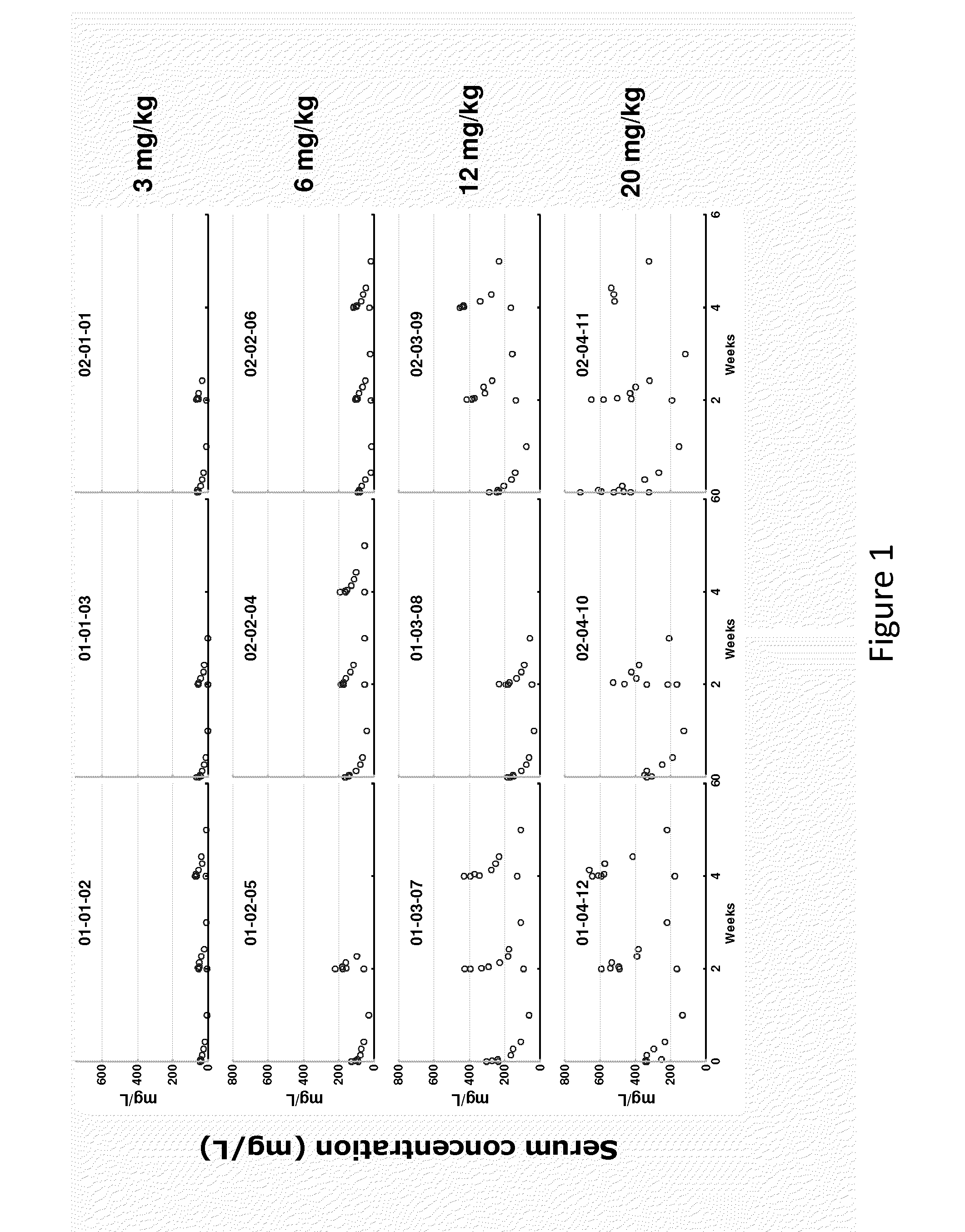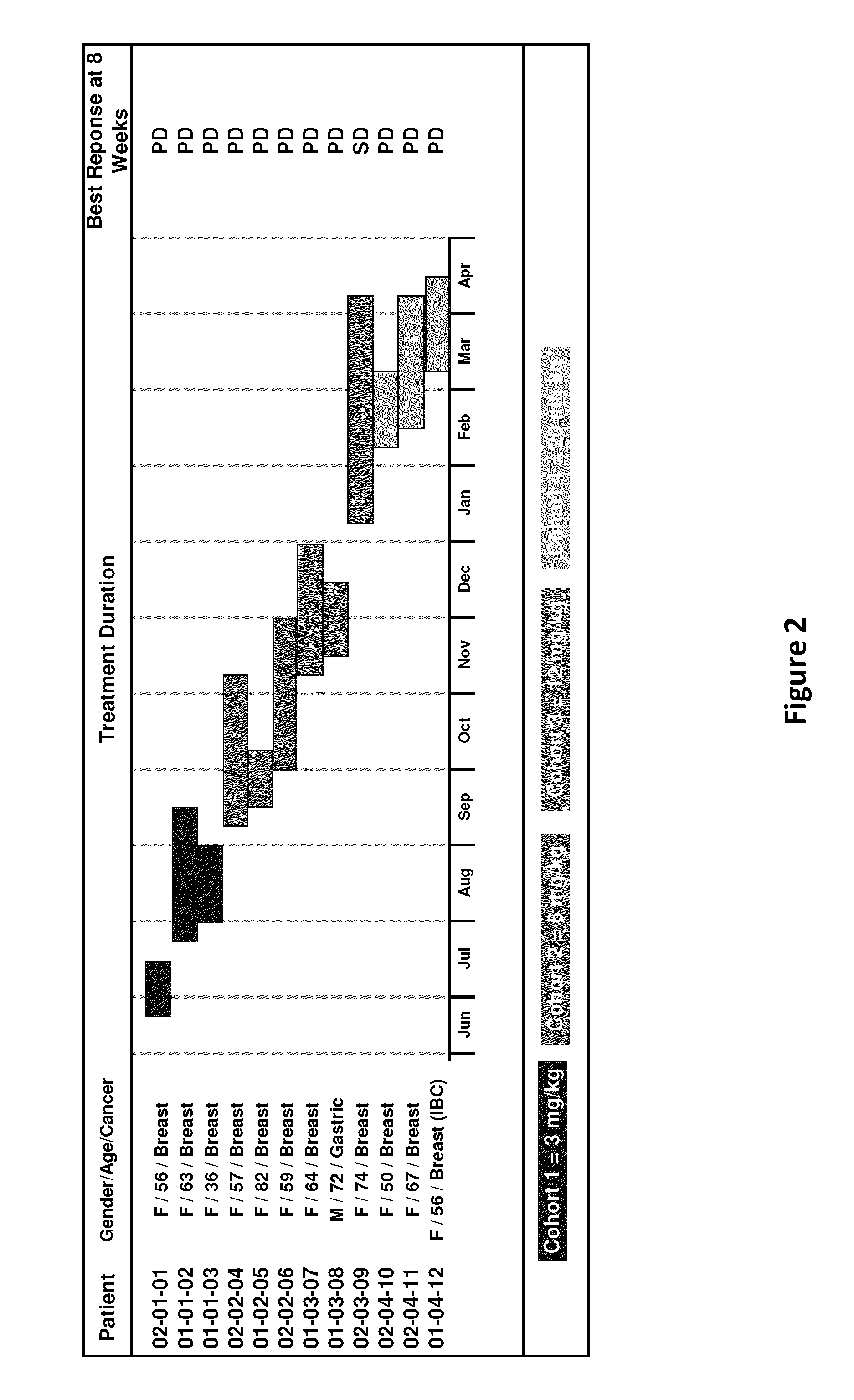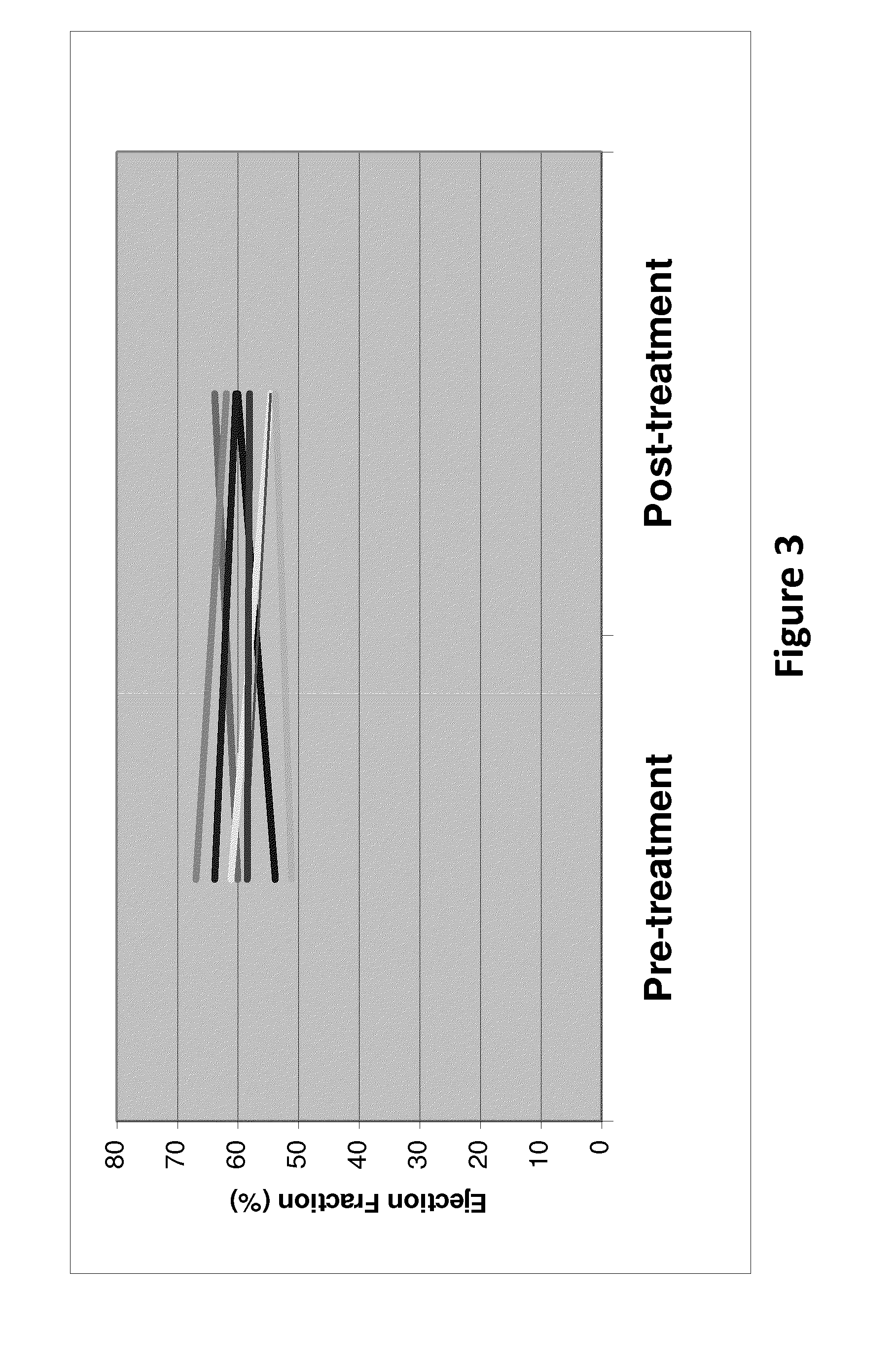Dosage and administration of bispecific scfv conjugates
a technology of scfv conjugate and scfv, which is applied in the direction of antibody medical ingredients, drug compositions, peptides, etc., can solve the problem that current erbb2-targeted therapies do not effectively inhibit heregulin activated erbb2/3
- Summary
- Abstract
- Description
- Claims
- Application Information
AI Technical Summary
Benefits of technology
Problems solved by technology
Method used
Image
Examples
example 2
Dosage and Administration of MM-111
[0027]Preferred plasma concentrations of MM111 achieved during treatment are at least 106 mg / L. It has now been discovered that certain combinations of dose frequency and dosage will achieve and maintain this plasma concentration during the course of treatment in at least half, and preferably in more than 60%, 70% or 80% of treated patients.
[0028]In certain embodiments a higher initial dose (loading dose-LD) is given, followed as defined intervals by at least one maintenance dose (MD). Intervals of dosing in days are typically indicated as QxD, wherein x represents an integer, so that a QxD of 7 indicates dosing every 7 days. Table 1A, Table 1B, and Table 1C below show doses and dosing intervals of the invention. In Table 1A, Table 1B, and Table 1C the indicated loading doses are optional—initial doses are preferably made at the indicated loading dose (LD), but may (e.g., as directed or at the physician's discretion) be made at the maintenance dose...
example 3
Clinical Trial of MM-111
[0029]A first-in-human phase 1-2 study evaluates the safety and tolerability of MM-111 and preliminarily explores efficacy in HER-2+ advanced breast cancer (ABC). The safety data obtained during the Phase 1 dose escalation portion of this study provide the basis of this report.
[0030]Methods: Patients (pts) with histologically confirmed HER-2+ advanced solid tumors progressing or recurring on standard therapy; aged ≧18 years; ECOG PS <2 and adequate organ function were eligible for Phase I. Pts with stable CNS lesions were also eligible. A Modified Fibonacci schema was used for dose escalation in Phase I. Primary endpoints for Phase 1 were determination of maximum tolerated dose / maximum feasible dose while secondary endpoints included determination of dose-limiting toxicity, adverse events, and pharmacokinetic (PK) and immunogenicity profiles of MM-111. MM-111 was administered intravenously weekly in 4-week cycles.
example 4
Clinical Trial Results—Overview
[0031]12 patients (11 ABC and 1 gastric cancer) were treated: median age 59 (range 36-82), median PS 1 (range 0-1), 11 ♀: 1♂, median number of prior therapies 7 (3-12). A total 19 courses (median 2; range 1-2) of therapy was administered at 4 dose-levels (3 mg / kg, 6 mg / kg, 12 mg / kg and 20 mg / kg respectively). Adverse events (see Example 3) assessed as being at least possibly related to MM-111 included pain (n=1), fatigue (n=3), dyspepsia (n=1), muscle spasms (n=1), heartburn (n=1), infusion reaction (n=1) and nail changes (n=1). There were no treatment interruptions due to adverse events. No dose limiting toxicities were observed and there has been no evidence of cardiotoxicity or immunogenicity to date. PK data indicate dose proportionality at the dose-levels explored and support weekly dosing.
PUM
| Property | Measurement | Unit |
|---|---|---|
| pH | aaaaa | aaaaa |
| concentrations | aaaaa | aaaaa |
| strength | aaaaa | aaaaa |
Abstract
Description
Claims
Application Information
 Login to View More
Login to View More - R&D
- Intellectual Property
- Life Sciences
- Materials
- Tech Scout
- Unparalleled Data Quality
- Higher Quality Content
- 60% Fewer Hallucinations
Browse by: Latest US Patents, China's latest patents, Technical Efficacy Thesaurus, Application Domain, Technology Topic, Popular Technical Reports.
© 2025 PatSnap. All rights reserved.Legal|Privacy policy|Modern Slavery Act Transparency Statement|Sitemap|About US| Contact US: help@patsnap.com



